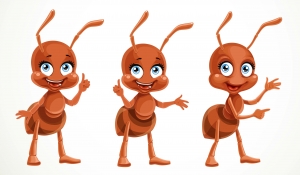How to Hug Customers in Your Blog
“It’s not location, location, location,’ Jack Mitchell writes in Hug Your Customers. “It’s service, service, service.” Sure, a decent location with reasonable traffic, convenient to get to, and more than adequate parking – will do just fine if you learn to ‘hug” your customers. Personalized attention to customers is the proven way to achieve sales results, is the thesis of Mitchell’s book, based on Mitchell’s Family of Stores’ clothing and jewelry business.
Since the first publication of his book, the author admits, much has changed, with the most significant of those changes being the growth of Internet sales for all industries. One thing that has not changed, Mitchell, claims, is the need to deliver personalized customer service. People still yearn for at least a smile and a thank-you from an actual human being, he says. Actually, people do more than merely yearn when it comes to personal service – research shows that customers are willing to pay more for a product if they receive better customer service during and after a purchase.
At our content marketing company, we absolutely agree. The challenge we blog content writers take on is translating those “smiles” and “thank-you’s” into digital messaging. As part of the business blogging assistance I offer through Say It For You, I’m always talking to business owners about their customer service. The challenge is – EVERY business says it offers superior customer service! (Has any of us ever read an ad or a blog that does NOT tout its superior customer service?) It’s not enough to say it – you have to specifically illustrate ways in which your company’s customer service exceeds the norm.
There’s more. Personalized service includes teaching customers new skills, and some blog posts can take the form of actually tutorials and step-by-step instructions. Stories of all kinds –help personalize a business blog. Even if a professional writer is composing the content, true-story material increases engagement by readers with the business or practice. Case studies are particularly effective in creating interest, because they are relatable and “real”.
In Journalism 101 class, we were taught to “put a face on the issue” by beginning the article with a human example A case study takes that personalization even further, chronicling a customer or client who had a problem or need, and taking readers through the various stages of using the product or service to solve that problem. What were some of the issues that arose along the way? What new insights were gained through that experience, on the part of both the business and the customer?
You might not think of simplifying your website navigation as another way to “hug” customers, but it absolutely is. Marketing blogs are all about getting found,, but now they’ve found you, both both the content of your blog posts and the navigation paths on the blog site had better be easy, calling for fewer keystrokes and less confusion.
When writing content for your own blog or when planning content with the individuals you’ve hired for business blogging assistance, keep in mind that online readers might decide at any point that they’re ready to learn more, that they have a question to ask, or that they’re ready to take advantage of your products and services. Make the process feel like a smile and and a hug!






Follow us online!